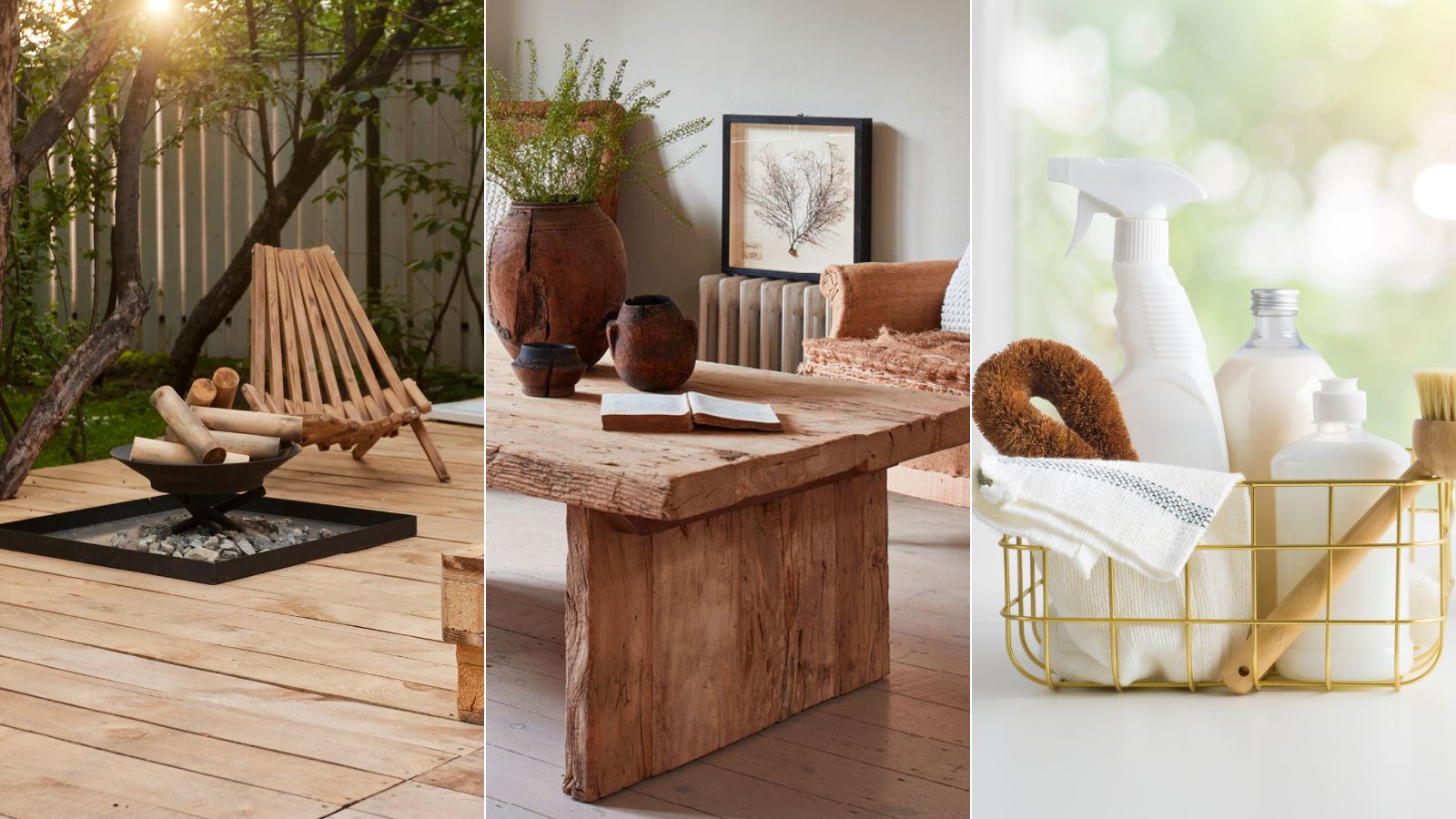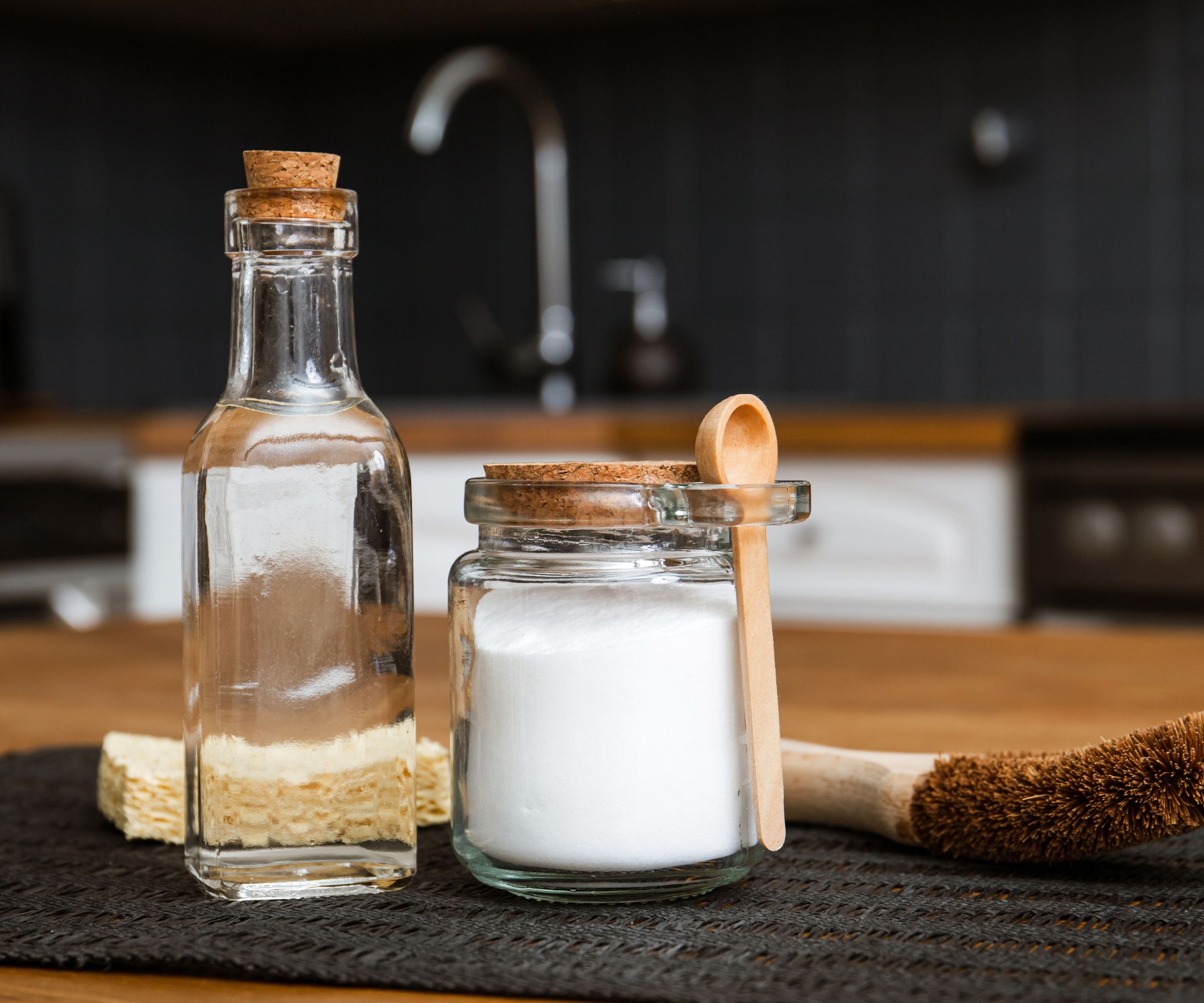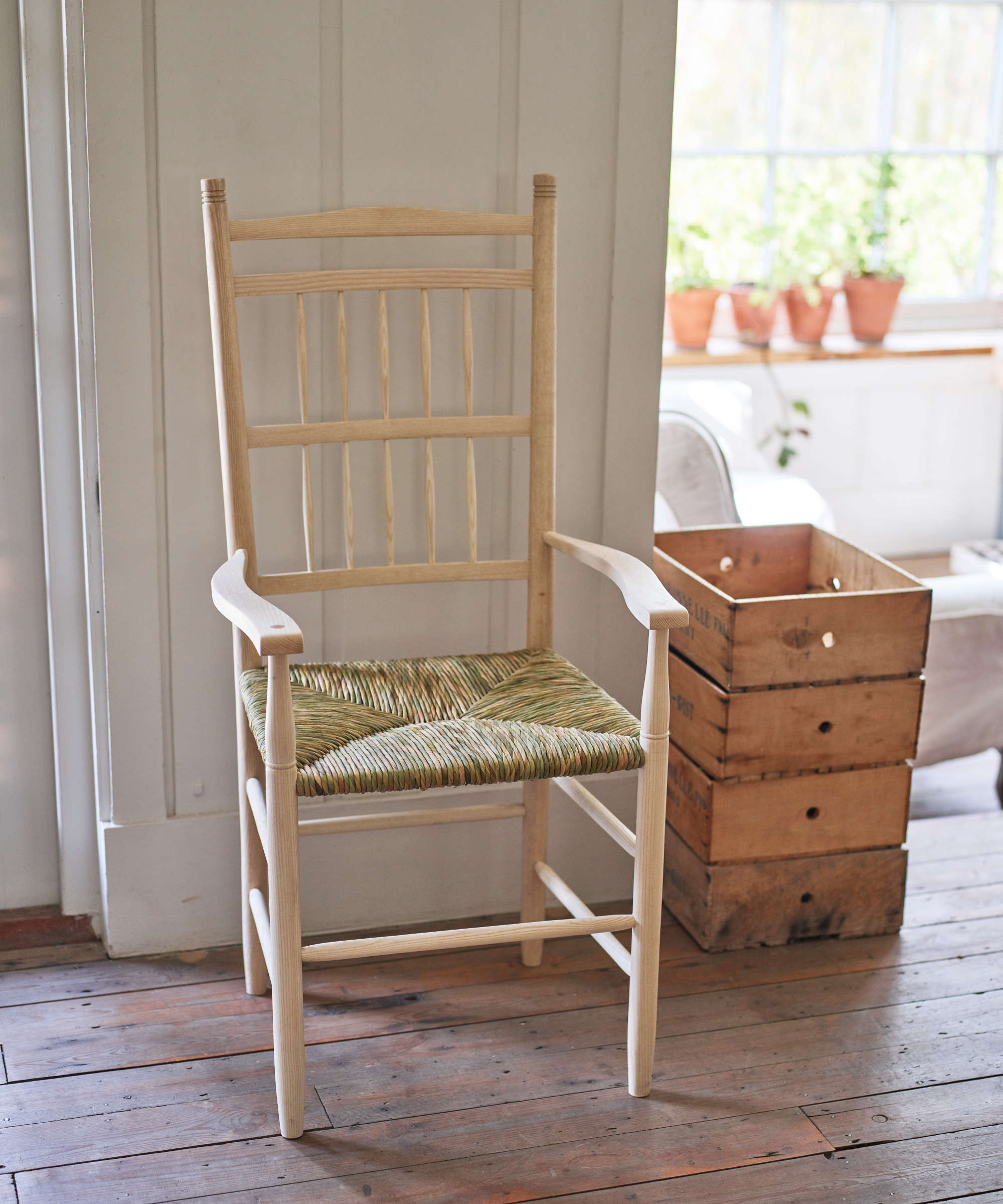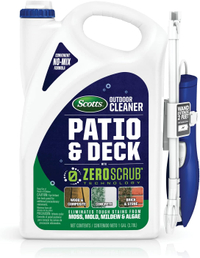How to remove mold from wood – 3 tricks to restore furniture and decks
Remove mold and prevent it from returning with these three tricks


Whether you have suffered from flooding, a burst pipe, or simply have a very damp spot in your home, when wood gets wet you are likely to see mold soon after.
Luckily, cleaning mold from wood is relatively simple but needs to be done quickly and carefully to prevent spores from spreading around your home and causing illness.
This is how to remove mold from wood with tricks for removing black mold and preventing it from re-growing.
How to remove mold from wood
When dealing with damp wood, the most important step is to let it dry out and remove excess moisture from the air. Start by vacuuming the moldy area using a vacuum cleaner with a HEPA filter to catch the spores. This will remove any loose debris and prevent it from spreading around your home – just be sure to empty the vacuum outside straight into your trash bin.
Then, while treating the area, simultaneously warm the spot and use a dehumidifier to help dry out the air and the surface of the wood.
1. Treat with white vinegar

Although most people turn to bleach when killing mold, using vinegar to kill mold has been proven far more effective thanks to its lower water content, not to mention it is less damaging to the wood beneath.
Shlomo Cherniak, handyman and owner of Cherniak Home Services recommends thoroughly spraying the area with vinegar or cleaning with hydrogen peroxide if that's all you have to hand and letting it sit for at least an hour.
Then, you can scrub the area gently with a sponge to help remove stubborn stains before letting it dry out completely.

Shlomo Cherniak is a handyman and founder of Cherinak Home Services in Baltimore. He has over seven years of experience in home improvement, with him and his team specializing in everything from installing kitchen cabinets to fixing leaky faucets to hanging pictures on the wall.
2. Sand the wood down

If you have particularly stubborn or large mold spots, sanding the wood down can help remove the affected area entirely, suggests Bethany Uribe, division manager at ASAP Restoration. Sanding a deck, for instance, can be more convenient than treating a whole patio with vinegar.
‘The best way to remove mold from wood is to sand the wood down past where the mold has infested it, then spray it with antimicrobial agents,’ Bethany suggests. ‘Let those sit and soak into the wood for at least 24 hours to kill any remaining mold spores and then repaint or restain the deck to its original color.’
3. Use an antimicrobial

'Rather than using bleach to kill mold, you can also turn to an antimicrobial to help remove mold from wood, especially when working on a large area such as a deck that you cannot sand down,' continues Bethany Uribe.
Bethany advises soaking the area entirely and letting it soak for at least 24 hours. She also suggests, ‘if possible, trying to raise the temperature of the wood to a level where the mold spores can’t survive.’ When working outside, this could mean working on a sunny day or using a patio heater over your wooden outdoor furniture.
‘If this is inside furniture, you can put it in a room with a dehumidifier and a heater to try and kill any mold spores living inside the wood grains,’ she adds.
Scotts Outdoor Antimicrobial Cleaner | View at Amazon
This outdoor cleaning agent is perfect for removing algae stains, moss, mold, and mildew from wooden furniture and decking without the need to scrub
How to prevent mold on wood

There are several ways to prevent mold growth on wood, but the most effective is keeping the area dry or ensuring that damp spots are allowed to dry out entirely.
‘It also helps to regularly clean the areas where mold grows,’ adds Melanie Ortegon, from Cleaner Guys, mold removal experts. ‘The most common areas we get mold are places we forget to clean, including inside the cupboards under sinks, behind refrigerators and washing machines, and in attics.
‘Lastly, whenever possible, have some windows open to keep your home well-ventilated. This helps prevent mold growth because mold grows best in stagnant, warm, humid environments.’
When working with outdoor wood such as decks, fences, and furniture, ensure it is treated with a good mold inhibitor and varnish to protect it from the elements.
FAQs
Does vinegar damage wood?
Vinegar will not damage most wood, especially if it is sealed. However, unsealed wood may experience some staining when sprayed with vinegar, so be sure to do a small spot test on an inconspicuous area before cleaning to be safe.
How long should I leave vinegar on mold?
When killing mold with vinegar, it is a good idea to leave it to soak and dry for at least one hour to ensure that all of the spores have been removed. Spray the mold directly, and do not be tempted to rinse or scrub to allow for proper absorption.
If you have dealt with one area of mold, it is important to check your home for mold to ensure you haven't missed a spot. Letting mold grow not only impacts your health, but lingering spores can encourage it to spread again, undoing all of your hard work to remove it in the first place.
Sign up to the Homes & Gardens newsletter
Design expertise in your inbox – from inspiring decorating ideas and beautiful celebrity homes to practical gardening advice and shopping round-ups.

Chiana has been at Homes & Gardens for two years and is our resident 'queen' of non-toxic living. She spends most of her time producing content for the Solved section of the website, helping readers get the most out of their homes through clever decluttering, cleaning, and tidying tips. She was named one of Fixr's top home improvement journalists in 2024.
-
 I swear by the ‘ETC’ method to prevent clutter and save money – my expert-backed checklist is transformative
I swear by the ‘ETC’ method to prevent clutter and save money – my expert-backed checklist is transformativeNow I Edit The Cart and save time, money, and energy
By Chiana Dickson
-
 Is this the end of built-in bedroom furniture? Designers decide if this once-loved feature will in fact date your space
Is this the end of built-in bedroom furniture? Designers decide if this once-loved feature will in fact date your spaceWill we be saying goodbye to built-in wardrobes, shelves, and drawers this year? We spoke with interior designers to see if this classic carpentry style will continue to be featured in bedrooms
By Eleanor Richardson
